Hi friends, I uploaded more pictures under private collection item. Any hints welcome. Eddy
|
|||||||||||
 |
Nihonto ClubJapanese Sword Information Exchange |
User login |
|
|
Disclaimer: Nihontō Club owners and independent contributors will not be held responsible for any loss, damage or inconvenience caused as a result of any inaccuracy or error within this website. Except where otherwise noted, this page is licensed under a Creative Commons License.
|
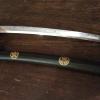
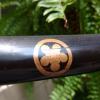
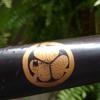
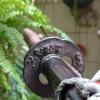
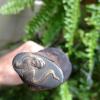
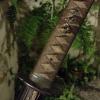
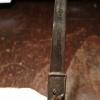

Norimitsu
The signature indeed is "Norimitsu". I have no input on which generation it might be.
It's too bad that somebody "cleaned" the tang.
The signature on the kozuka blade is Kanesada.
Pete
Norimitsu
Hi Pete, thanks or your reply. My father cleaned the left tang side to unveil the Kanji Mei...
Why do I see that blades are polished. Does it not ruin them too? This blade is badly scratched in many places, as also notches to the edge. I assume from usage/ battle damage. Should not this also remain untouched?
best
Eddy
polishing
Hi Eddy,
On a Japanese sword, "polishing" refers to a restoration done by a "togishi", a professional artisan (almost all are in Japan). The process is done with many types of natural stones, strictly by hand, takes many hours of work, and is very expensive.
I don't recommend it to a 'beginner' for various reasons. An experienced collector may justify getting a polish done, but they know what they're getting into.
A proper polish "usually" enhances the value of the blade.
The tang of the sword is meant to be handled with bare hands, and the resulting 'patina' is a feature, and an important indicator of the rough age of the blade. A 'cleaned' tang is a fairly serious flaw to a collector.
Nearly all blades found outside of Japan were WWII war souvenirs. The scratches and chips could possibly be from "battle", but it's frankly more likely from abuse. The GI's didn't have much knowledge or respect for swords...
A Japanese soldier would take very good care of his blade, unless it was a modern factory-made type (like a Japanese NCO sword).
Pete
Grieving Blades
Hi Pete,
Thanks for your insight.
'What the eye does not see, the heart does not grieve upon...'
I know you are right. Every time I talk about the wakizashi, somebody recommends me to watch the video where some guy shoots bullets to see how a Katana blade takes the beating. Or I am asked if I tried already to cut another blade clean, etc etc. So I also believe the notches to the edge may be part of some silly testing edge against edge... My oh my...
There are though some circular patterns to the Shinogi, that suggest me a contact to the blade only possible when you apply actual 'Suriage' action to sliding parry the opponent's sword... (or at least I want to believe that)
Eddy